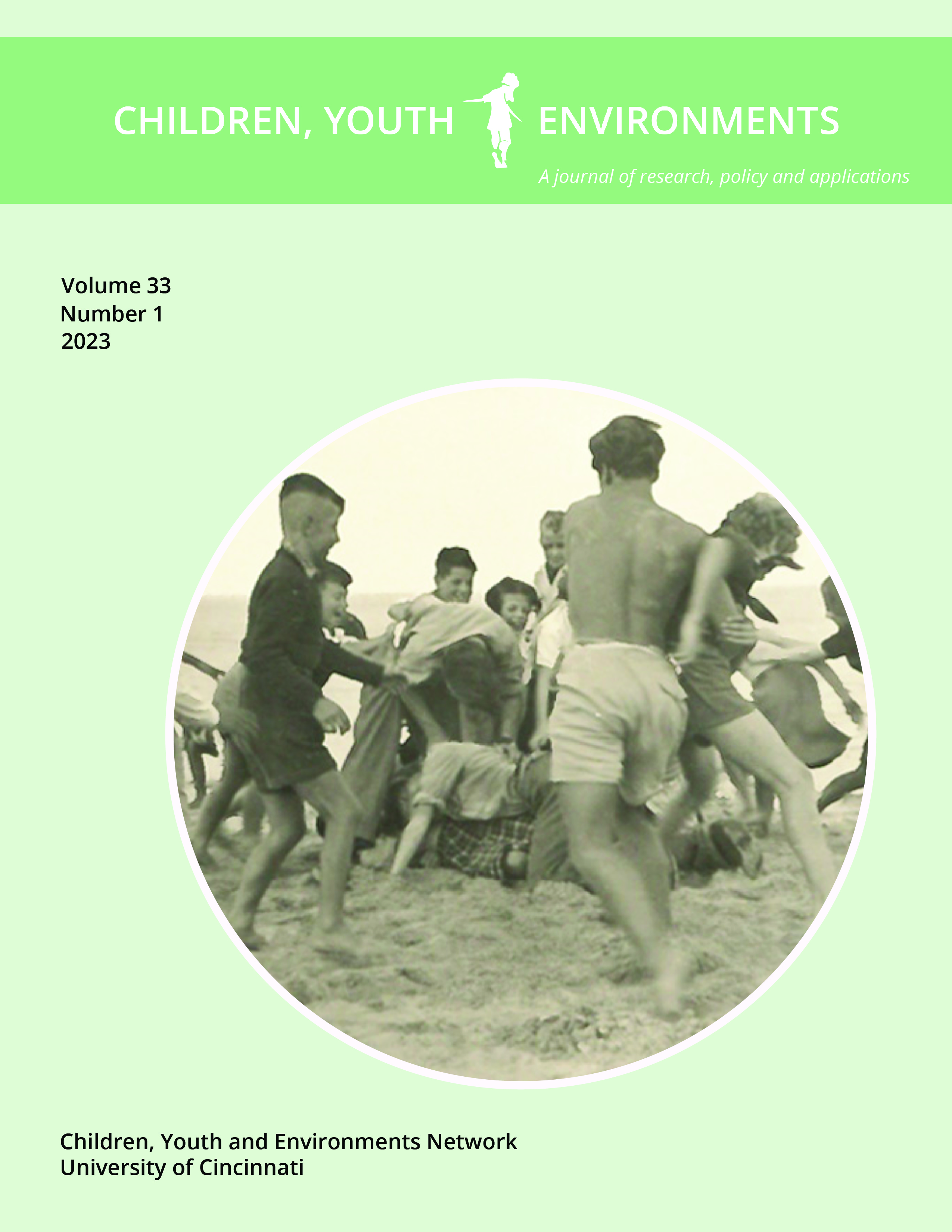Vol. 33 No. 1 (2023): Children, Youth and Environments

Inside this issue, you will find diverse scholarly work spanning across the globe. We start our trip in Istanbul where Ataol and co-authors studied online artwork elicitations of children to reveal young people’s value as social agents in urban planning and their role in fighting against the continuous challenges our planet faces. Ataol and co-authors also demonstrate that children’s participation better in forms when children guide knowledge generation. Crossing the globe, we arrive in Toronto where Souza Donato and co-authors examine how neighborhood landscape affordances relate to children’s play during COVID-19. Findings suggest the greater number of landscape characteristics and the higher the population density is related to decreased time spent outdoors. Additionally, children who had access to
trails within their neighborhoods were more likely to spend time outdoors during the pandemic. Moving south, we arrive in the midwestern United States where Altenburger conducted an ethnographic case study examining how building design focused on engagement and safety is used to also support school practices. Ultimately, findings revealed that the educational environment that prioritizes students’ containment to secure sufficient attendance rates leaves the teenagers feeling betrayed and untrusted.
Heading across the Atlantic Ocean, we arrive in Scotland where Rae and co-authors looked at the relationship between school environment and identity development to reveal access to social places relates to social identity. Next, we arrive in Sweden, where Almers and co-authors address how primary school children’s perspectives on a ‘good schoolyard’ can be illuminated through envisioning workshops using model-making and explain ways to best engage children
through this type of research. Heading to the southern hemisphere, we arrive in Australia where Miller and co-authors investigated the distribution and use of purpose-built nature play spaces to reveal their prevalence and suggest most South Australian schools have facilities to provide nature-based play and learning. We end our world tour in Brazil where Silva and Iared studied children’s sensory responses to green areas around their school to reveal interesting and rich ways urban contexts can be used to spark interest in environmental education. The issue continues with a historical note by van Vilet– detailing the emergence of ‘Hedenesse,’ a self-governing youth village in West Zeeuws-Flanders, The Netherlands, after World War II. This is followed by a report from the field. Dillon and co-authors share their project focusing on outdoor gardening in early childhood education in the United Arab
Emirates. We close our issue with Bergamini’s review of Earthquake Children: Building Resilience from the Ruins of Tokyo, by Janet Borland. Happy Reading!







